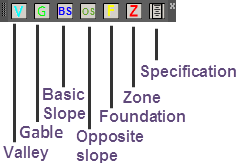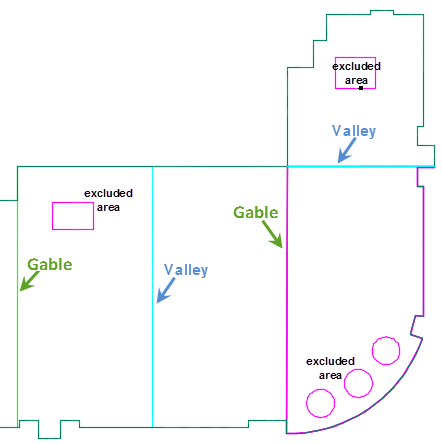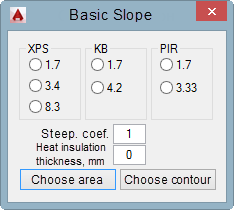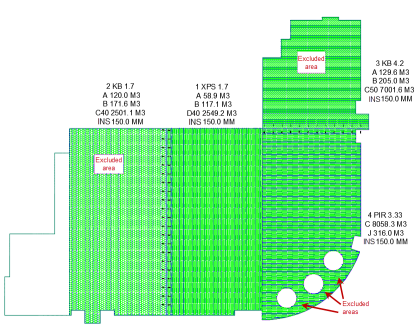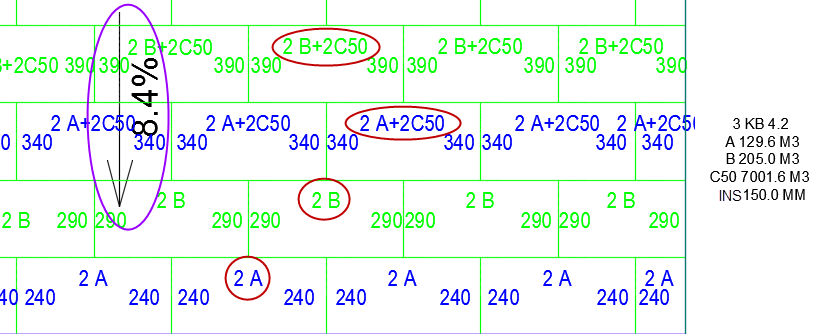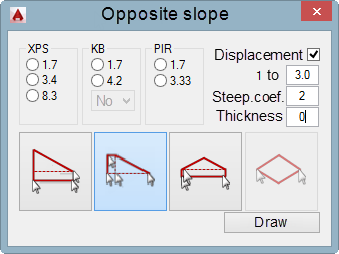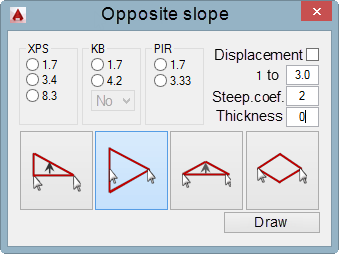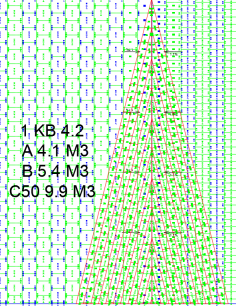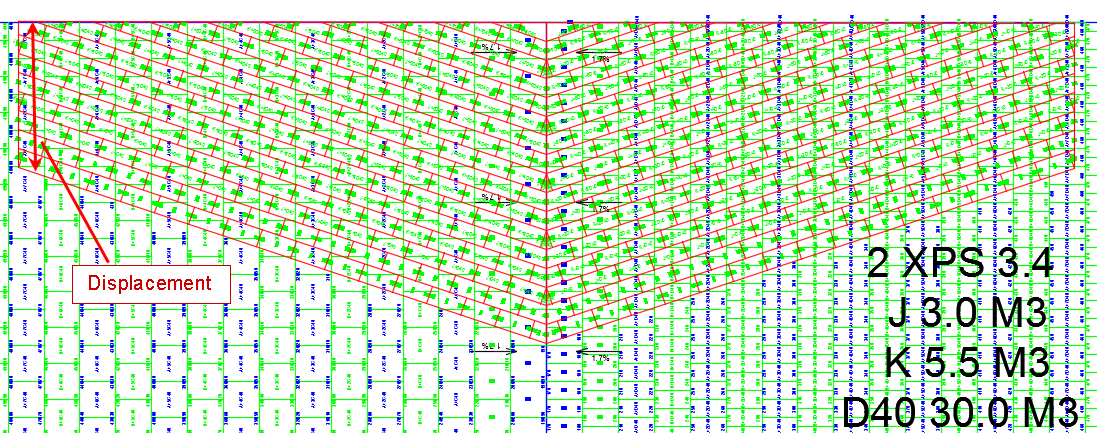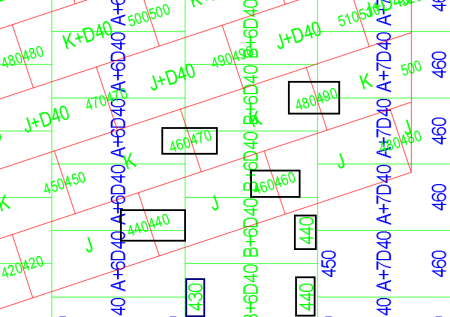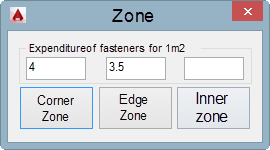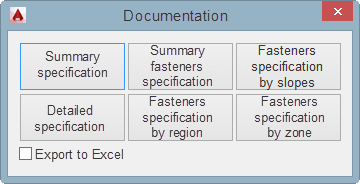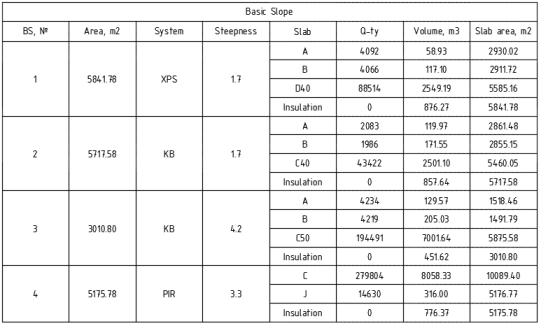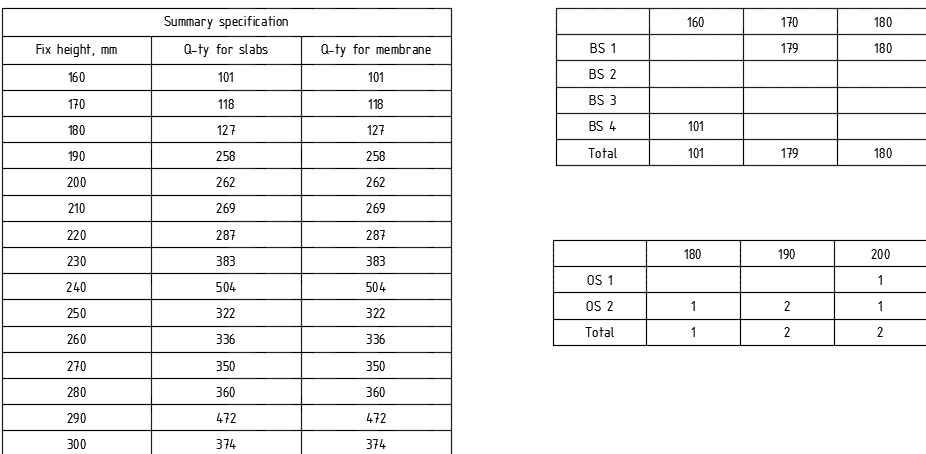Soft4Cad team developed an AutoCAD application (plugin) to helps designers to layout insulation system for building roofs. TekhnoNIKOL Corporation is one of the largest manufacturers and suppliers of roofing, waterproofing and insulation materials.
The main function of the program is similar to the program for the Rockwool Company. However, this program has many additional features which speed up the design process.
Menu
In the screenshot pictured below, you can see the menu and main program functions.
Buttons: V - valley drawing tool, G - Gable drawing tool, BS - basic slope layout tool, OS - opposite slope layout tool, F - roof base (material), Z - corner area, edge zone, inner zone, Specifications

Menu of the Program
Valleys and Gables
These two buttons allow users to draw lines on the special layer. Next,Valleys are needed to layout basic slopes.
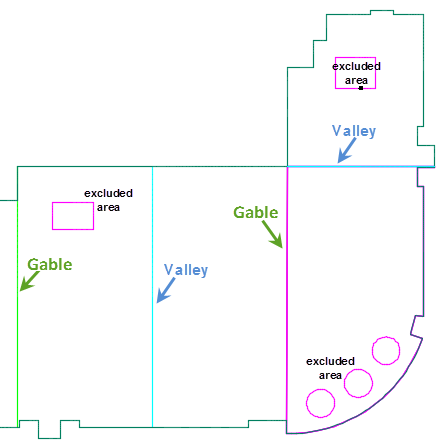
Valleys and Gables on the Drawing
Basic slopes
It is possible to layout different insulation systems (ex. XPS, KB and PIR) with different steepnesses. During the layout phase, each basic slope gets its own number for easy navigation and identificaiton in the project reports.
Additionally, users can exclude any inside regions from the insulation layout and set the steepness coefficient for basic slopes. The coefficient is needed for steepness magnification.
Also, users can set the thermal insulation thickness in millimeters - the basic, flat insulation layer on the roof. In the future, extraw thickness will be added for the fastener length.
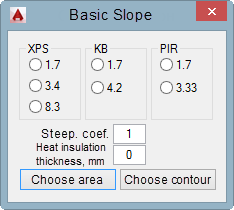
Window - Basic Slope
Each slope description contains:
- number (first number)
- type of insulation system
- volume of each type of slab in cbm
- extra insulation thickness
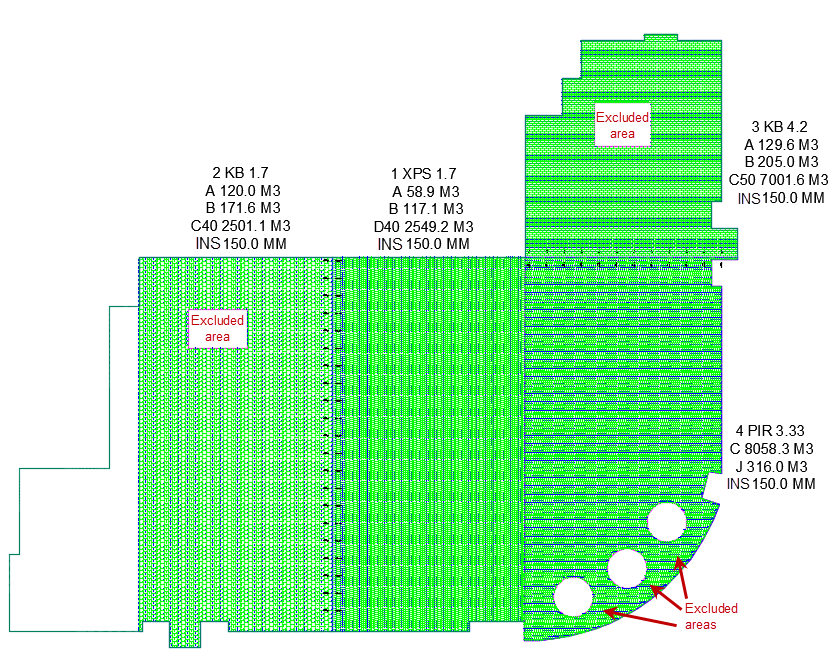
Roof with Four Basic Slopes
Basic slope layout is not limited to rectangular areas. Any regular polygons are possible.
Let's examine basic slope in detail. Look at the a basic slope number 3, insulation system KB and steepness 4.2%. Before laying out the basic slope, the user must set the steepness coefficient to 2 and extra thickness of the basic flat layer to 150 mm.
Therefore, the summary steepness is 8.4%. In each row, there are double slabs (A, B, and C). The fasetener height (240 mm) is derived by adding the basic flat layer (150m) and the two slabs A (45 mm each).
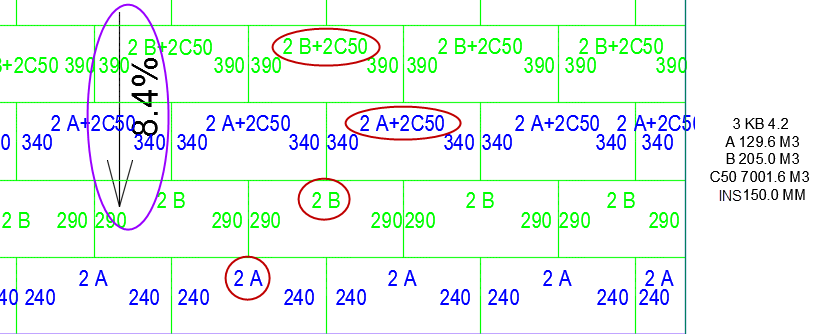
Example of the Basic Slope
Opposite slopes
Users can draw opposite slopes on the basic slope or directly on the roof. They must pick a type of insulation system for the opposite slope, pick extra thickness if the opposite slope is set directly on the roof, and aspect ratio of the opposite slope. There are usual opposite slopes and displaced opposite slopes.
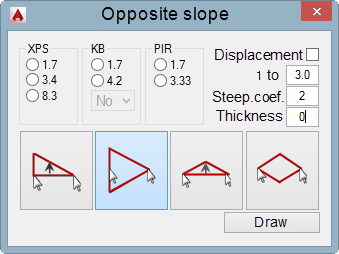
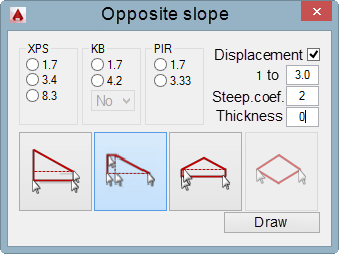
Typical Opposite Slope Window Displaced Opposite Slope Window
Each opposite slope gets its own serial number and description as well as basic slpope.
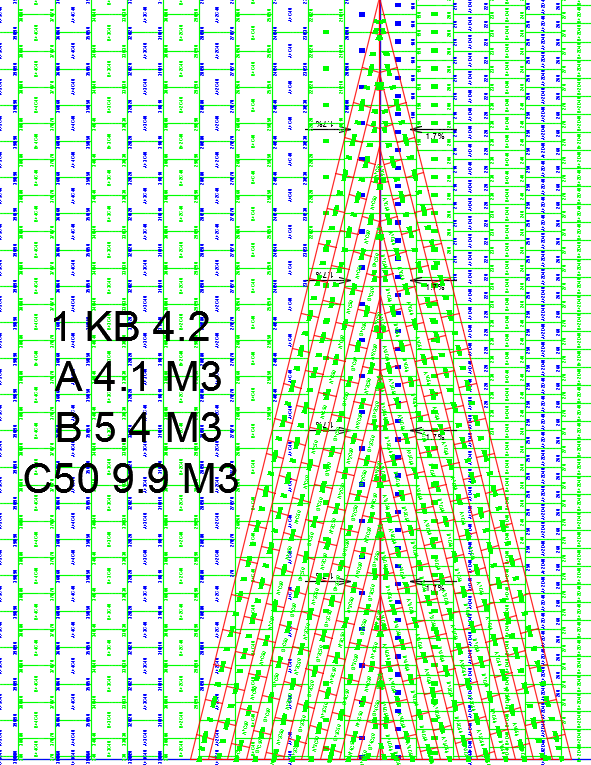
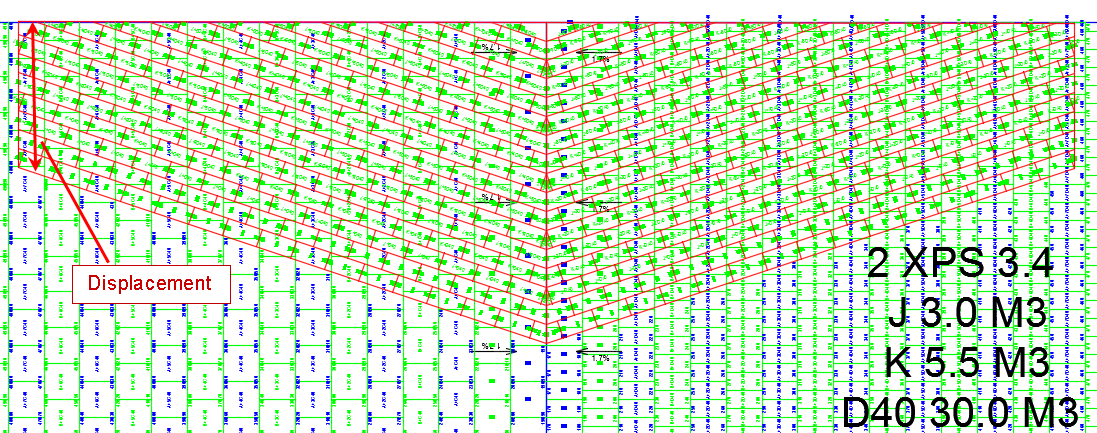
Typical Opposite Slope Displaced Opposite Slope
Fixture
During layouting basic slopes and opposite slopes the program automatically calculates fixture lengths (self-tapping screws) for each slab. If opposite slope sets on the basic slope, program counts summary lenght for both. Also programm takes into account extra thickness of heat insulation flat layer. On the figure below you can see that program doesn't count fasteners twice.
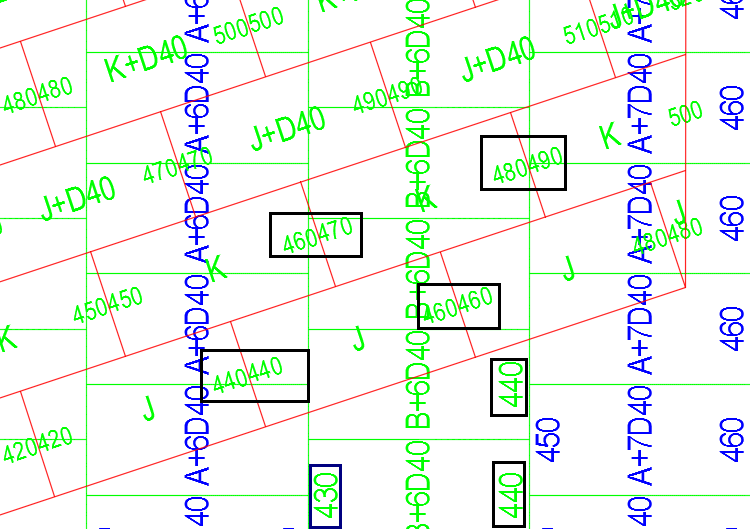
Self-tapping Screws Lengths for Basic and Opposite Slopes
Zones and Regions
After all basic slopes and opposite slopes have been laid out, the roof can be divided into 3 zones: Corner Zones, Edge Zone, and Inner Zone. Each zone has its own parameters for the number of fasteners needed to attach isulation blocks.
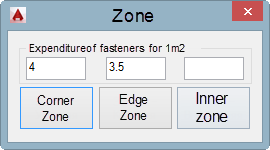
Zones on the Roof - Window
At times it is necessary to increase the number of fasteners required in order to account for environmental conditions for a given location (ex. high winds, snow loads). Users must set the number of fasteners needed to fix the membrane in the Corner Zones, Edge Zones and Inner Zones.

Zones on the Roof
Documentation
The screenshot below provides an overview of the list of output documents.
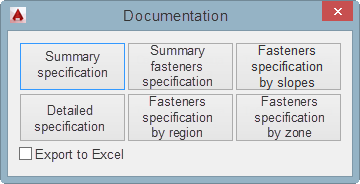
Document Types
Summary Specification
The Summary Specification counts the total amount of slabs in all projects. Results tables are divided by type.

Detailed Specification
The Detailed Specification counts the slabs for each basic slope and opposite slope separately.
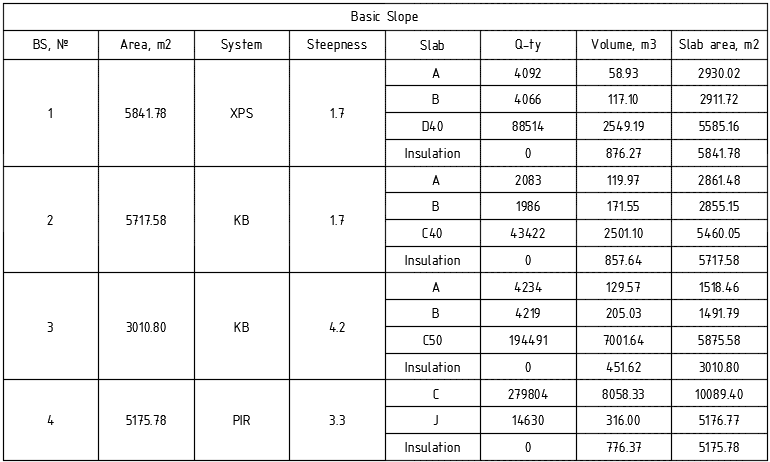
Summary and Detailed Fasteners Specification
The program creates two types of tables - summary tables for fastener lengths in the projects and separate table for each opposist basic slope. The table shows how many fasterns you need to attach to the slabs of the roof. If under basic slope, there is an additional layer (ex. extra thickness, swaterproofing), this thickness is also taken into the account.
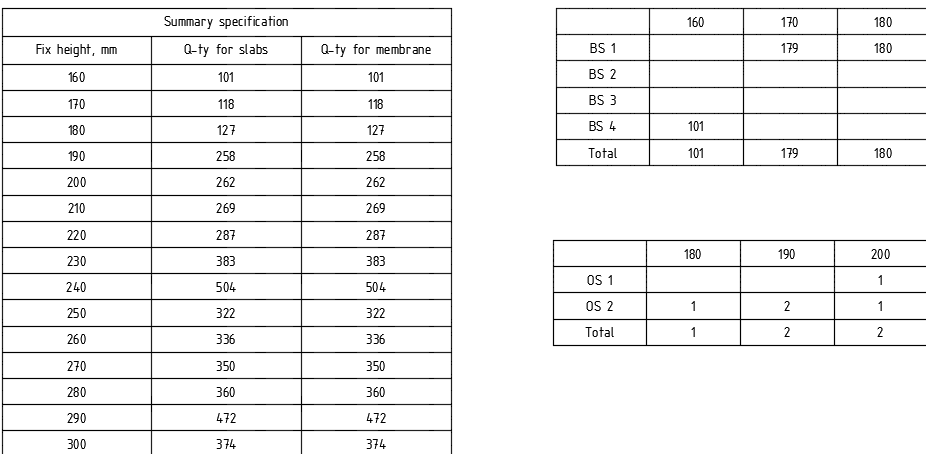
You can also create fastener specifications for any corner, edge or inner zone, or any region.
3D view
And finally user can switch on layer 3D TECHNONIKOL and program creates 3D model of basic and opposite slopes automatically.


